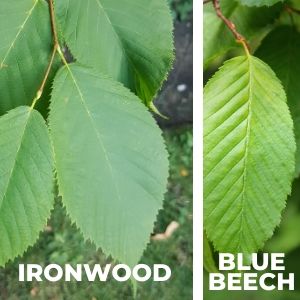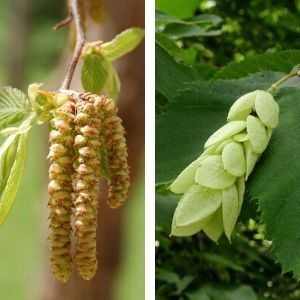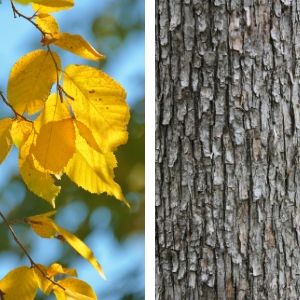
The ironwood also proves how easy it is to confuse trees by their common names. Ironwood is a common name that has been given to multiple species, including the native blue beech (Carpinus caroliniana). To confuse things further, the blue beech is also known as hornbeam which is very similar to the ironwood’s other popular common name, hophornbeam! It just goes to show that using Latin names is important for distinguishing trees apart that may be similar in nature. Perhaps if we called the ironwood by its Latin name, Ostrya virginiana, more often, it wouldn’t go unnoticed so easily!

Despite often being overlooked, the ironwood’s characteristics are quite unique. Clusters of long, brown male catkins emerge throughout the winter season and then, in early spring, light green, slender female catkins follow. These catkins are important winter food for ruffled grouse and other birds. Female flowers are then followed by small, flattened, leafy clusters of sacs-like seed-bearing pods resembling hops that mature in the late summer and persist on the tree throughout the winter. The seeds of the ironwood are preferred by the purple finch, downy woodpecker and rose-breasted grosbeak.
T
Ultimately, despite its inconspicuous tendencies, the ironwood makes for a great backyard tree. If you are interested in helping the ironwood “stand out” in our urban forest, check out our website for more information on the Backyard Tree Planting Program and sign up for a consultation with one of our arborists today!
Brenna Anstett is an ISA certified arborist and the Residential Planting Programs Manager at LEAF.
The Backyard Tree Planting Program is supported by the City of Toronto, the Regional Municipality of York, Durham Region, the City of Markham, the Town of Newmarket, the Town of Ajax, the City of Oshawa, the City of Pickering, the Township of Scugog, the Town of Whitby and Ontario Power Generation.
